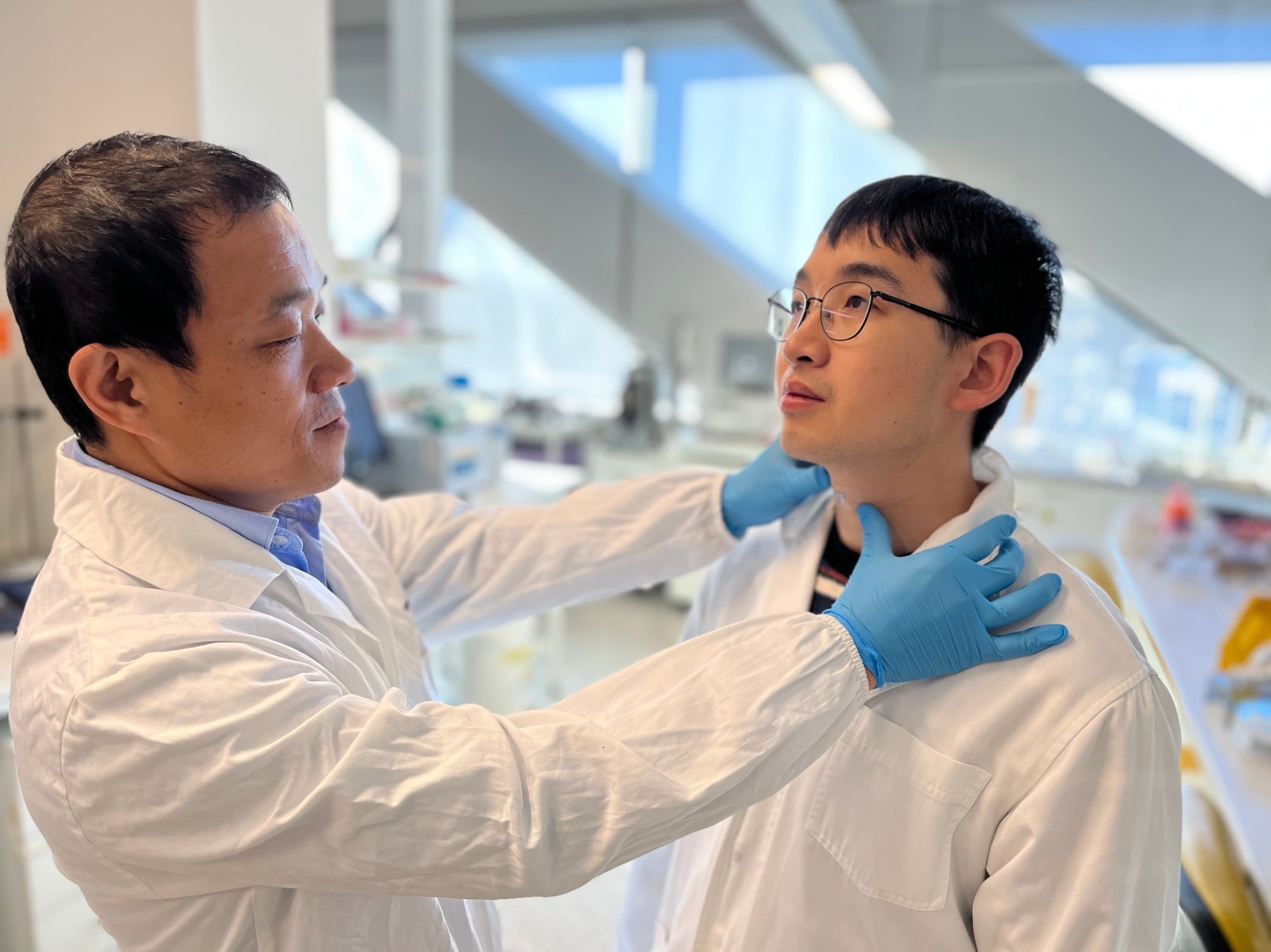Scientists at Monash University have developed a novel ultra-thin skin-patch integrated with nanotechnology that can monitor 11 human health signals.
 Professor Wenlong Cheng places the wearable “skin” biosensor on Dr. Shu Gong’s neck. Image Credit: Monash University
Professor Wenlong Cheng places the wearable “skin” biosensor on Dr. Shu Gong’s neck. Image Credit: Monash University
Scientists from the Faculty of Engineering and the Faculty of Information Technology integrated artificial intelligence and nanotechnology to bring machines a step ahead in communicating with the human body.
With specialized algorithms, personalized Artificial Intelligence (AI) technology can unravel several body signals, comprehend them, and decide on the next steps.
Nature Nanotechnology recently published this study. The study could alter how remote healthcare can be offered and be the future of communications devices and personal alarms.
Wearing it on the neck, Professor Wenlong Cheng, the lead researcher, stated the ultra-thin wearable patch has three layers, which measure neck movement, speech, and touch. It also quantifies breathing and heart rates.
Emerging soft electronics have the potential to serve as second-skin-like wearable patches for monitoring human health vitals, designing perception robotics, and bridging interactions between natural and artificial intelligence.
Professor Wenlong Cheng, Study Lead Researcher, Monash University
Associate Professor Zongyuan Ge, from the Faculty of Information Technology, is part of the Monash group to have built a frequency/amplitude-based neural network known as Deep Hybrid-Spectro, which can track several biometrics from a single signal automatically.
As people all sound and act differently, the next step is to program and personalize the sensors using even more sophisticated algorithms so they can be tailored to individuals.
Professor Zongyuan Ge, Faculty of Information Technology, Monash University
The sensor is built from vertically aligned gold nanowires, laminated cracked platinum film, and a percolated gold nanowire film.
Neck skin is the most sensitive skin on the body and connects up to five physiological activities associated with the human throat: speech, heartbeats, breathing, touch, and neck movement.
This study was mostly conducted at the Monash Nanobionics lab and in part at the Melbourne Centre for Nanofabrication (MCN) in the Victorian Node of the Australian National Fabrication Facility (ANFF) and the Monash Centre for Electron Microscopy.
Journal Reference:
Gong, S., et al. (2023). Hierarchically resistive skins as specific and multimetric on-throat wearable biosensors. Nature Nanotechnology. doi.org/10.1038/s41565-023-01383-6.